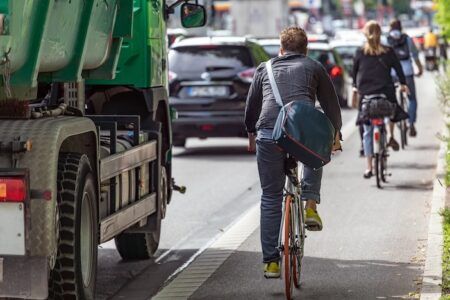Professor Nick Reed, founder and CEO of Reed Mobility is an expert in psychology and human factors in transportation. Here he looks at the challenges of negative thinking, how this might contribute to stubbornly high injury rates on roads, and how we might overcome this
This column gives me the opportunity to share ideas from psychology that offer insights into the world of transportation. One such concept that has stuck with me from my undergraduate days is “learned helplessness,” described following experiments in the 1960s by the psychologist, Martin Seligman. He showed that dogs enclosed in a fixed environment and continually exposed to electric shocks eventually stopped struggling to escape and fell into a passive state of torpor.
Road casualty statistics in the UK since 2010 have declined only marginally (1,857 that year compared to 1,624 in 2023) after decades of progress. This coincided with a change of government to the Conservative Party after 13 years of Labour and followed the 2007-2008 financial crisis. Recent work by campaigner Ian Greenwood has explored the politics of road deaths finding that while the UK was seen to be performing well in league tables of road safety, the desire for improvement was not a priority.
“Since 2010, the UK road safety community in has experienced something akin to learned helplessness”
Since 2010, the road safety community has therefore experienced something akin to learned helplessness. Advocacy for measures proven to be effective were met with indifference. Passivity at a national level prompted other road authorities to adopt their own safety goals with TfL, National Highways and West Midlands Combined Authority all aiming to eliminate death and serious injury from their networks. The re-election of a Labour Government in 2024 has raised hopes for a return to annual reductions in deaths on the roads. The new government has promised a new road safety strategy, thereby addressing the first request of the recent manifesto published by the Parliamentary Advisory Council for Transport Safety (PACTS).
By contrast, I am nervous for the US. With fatality rates considerably higher than those in other OECD countries, 2022 saw Secretary of Transportation Buttigieg publish the National Roadway Safety Strategy in response – a plan to implement the Safe System approach and reduce death and serious injury on US roads. Although this plan is starting to have an impact, the recent election result may derail it. Under the previous Trump presidency, the National Highway Traffic Safety Administration (NHTSA) did not have a leader for nearly two years, and I can imagine the planned Department of Government Efficiency, with a stated aim to “dismantle government bureaucracy, slash excess regulations, cut wasteful expenditures and restructure federal agencies”, will have this plan in its sights. Road safety campaigners in the US may start feeling helpless again.
Since my undergraduate days, neuroscience has determined that learned helplessness is a misnomer. Rather than learning to be helpless, the dogs in Seligman’s experiments unlearned their natural reaction to escape aversive stimuli. Regardless of the politics, let’s make sure that the transport community never unlearns the passion to prevent road death.
This article was first published in the December 2024 edition of TTi magazine





